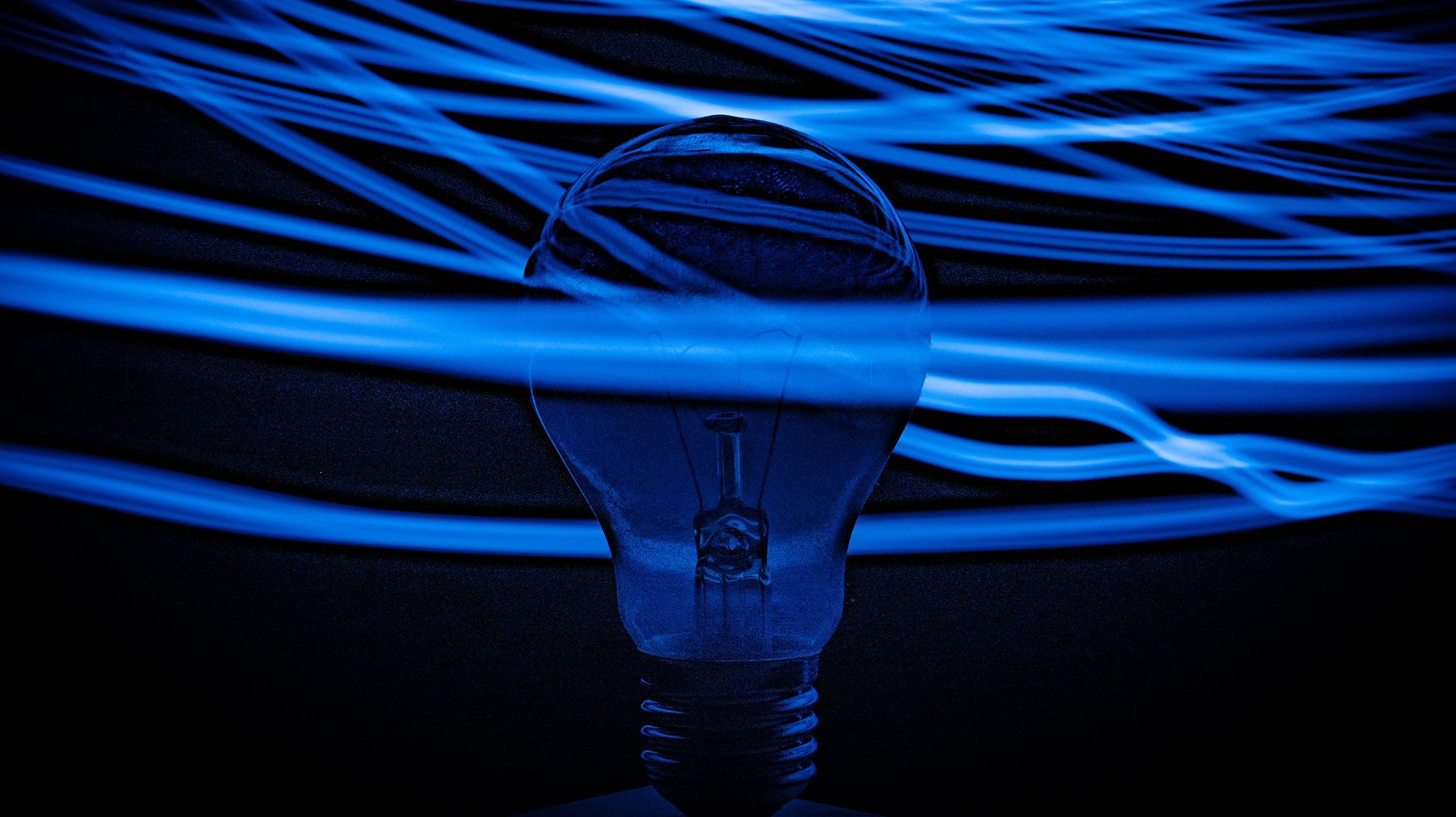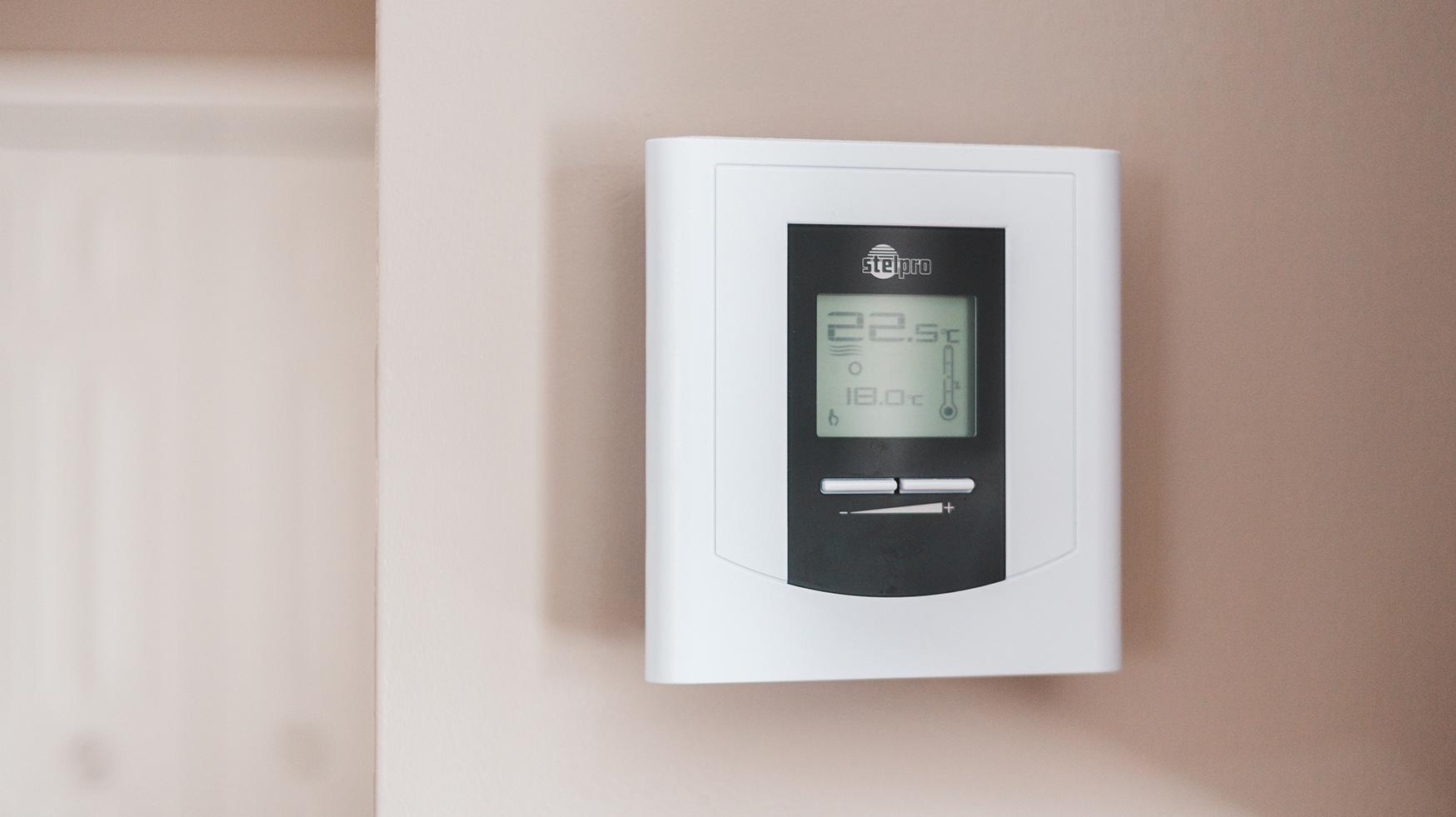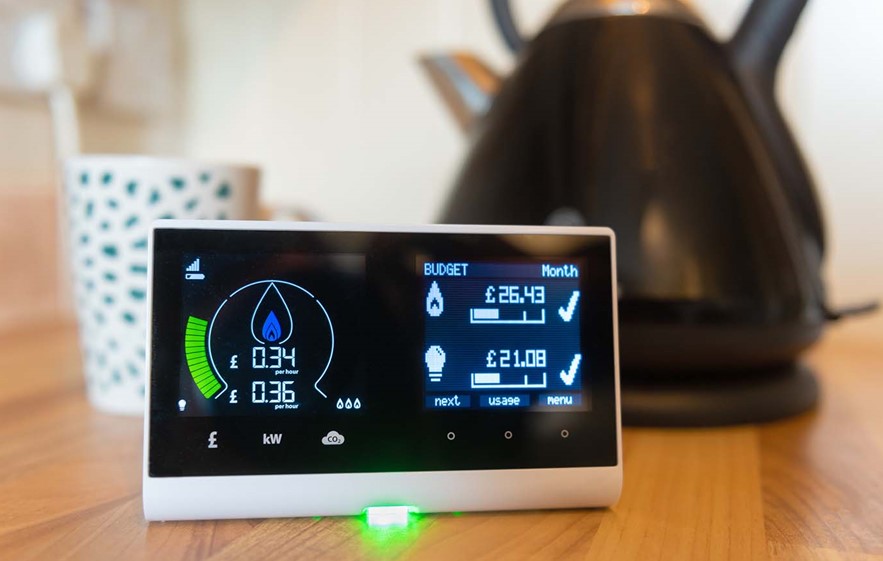An energy-independent carbon-free future starts with our energy savings

Since Russia triggered the ongoing energy crisis, skyrocketing gas and electricity prices have made households and businesses shiver across Europe. EU countries have adopted different emergency measures to reduce energy demand and tackle the price surge.
Saving energy has never been more urgent. European consumers now need structured assistance to shift their energy behaviour in a sustainable and affordable way for their present and future. That’s why we are here. Our power tips will help you learn how to save energy and money while contributing to your energy-independent carbon-free future.
What have policymakers done so far to help save energy during the gas crunch?
Crisis calls for unprecedented actions. EU Governments introduced relief packages, VAT cuts, energy rebates, vouchers, and demand reduction plans to tackle the price surge.
In July, the European Commission introduced a Gas Demand Reduction Plan, to address supply disruptions from Russia and bring down natural gas prices. The Council swiftly adopted the proposal, setting a 15% reduction target to be achieved via Member State’s voluntary national programs.
With the winter season approaching and prices showing no sign of rest, the Commission proposed complementary electricity targets recommending EU countries to curb gross electricity demand by 10% and obliging them to reduce their demand by 5% per hour during peak hours.
Words quickly turned into action. EU Member States started switching lights off in shops, historical buildings, and streets at night-time, shutting down public halls and corridors’ heating and advising businesses to adjust their thermostat to 19°C in winter and 27°C in summer.

The cheapest energy is indeed the one we don’t use. Yet, lowering our thermostat and changing our energy behaviour via short-term emergency measures won’t be enough to end the EU’s dependence on fossil fuel imports and support our society’s decarbonisation.
Today there are many medium and long-term solutions to increase customers’ savings while improving their comfort in a climate-friendly way and they can all be summarised under one word: energy efficiency.
What is meant by energy efficiency?
Energy efficiency means consuming less primary energy to perform the same task or achieve the same result.
When driven by clean and renewable electrification, it can unlock instant energy savings in the housing, transport, and industry sectors. Electric solutions are in fact several times more energy-efficient than conventionally fossil-fuelled applications. The result is lower power use, reduced waste, and increased monetary gains while keeping, if not improving, the desired levels of performance.
Why is saving energy important?
Adopting an energy-mindful approach brings many benefits other than immediate monetary gains.
Climate change and Air pollution
The link between saving energy and climate change mitigation is straightforward. Lower use translates into lower greenhouse gas emissions.
Despite strong efforts to electrify our societies, energy use and production are currently responsible for 75% of EU greenhouse gas emissions; saving energy can have a major impact not only on the decarbonisation of the sector but on the entire European economy. This is why the Commission increased the EU Energy Efficiency Target with REPowerEU from 9% to 13% by 2030. The European Parliament might now further raise the bar to 14.5%.
Curbing emissions via energy conservation also brings immediate benefits in terms of reduced air pollution which is a major cause of respiratory and lung diseases. An energy mindful behaviour, therefore, contributes to improving our health as well as the air quality of our community and surrounding area.
Fighting energy poverty and empowering customers
Low-income households are often the most exposed to energy-inefficient homes. Installing smart electric appliances - such as smart thermostats and heat pumps - as well as rooftop solar panels, can help them immediately bring down their monthly energy bill, by reducing power demand via energy efficiency, self-consumption, and direct electrification.
In the long-term, renovations and insulations can further unlock financial gains by reducing gas and power use while improving the comfort of the living area.
Planning a digitalised district heating project can extend monetary savings to the wider community. This system replaces individual heaters with a centralised energy center to deliver heat to the entire communal area while reducing greenhouse gas emissions and energy demand. Each community should choose whether to opt for a heat pump or a district heating service based on their geographical areas.
At the same time, smart electric solutions can also raise awareness of households’ daily consumption and waste. Users can learn how to manage their energy use and become active agents in the power network by selling their unused electricity to balance distribution grids.
Energy security
The ongoing energy crunch has made clear that Europe needs to escape Russia’s grip and improve its overall resilience as soon as possible. The Commission’s Fit-for-55 targets had originally called for cutting gas use by 30% by 2030 with energy savings contributing to more than a third of this reduction.
In the current crisis, this target has turned into “100% independence from Russia’s gas and oil imports”. Electrification coupled with energy sobriety is the quickest way to achieve such a goal. This requires shifting to energy-mindful devices powered by clean and renewable energy in our housing, transport, and industrial sectors.
Now that we have understood why saving energy is so important, where do we start? Let’s find out with our power tips.
How to save energy and money in housing, transport, and industry?
From changing your heater, to buying an electric vehicle to investing in a renovation program, there are multiple ways to save energy and money while improving your carbon footprint.
Four ways to lower your home’s energy bill:
Buildings are responsible for 40% of the EU’s energy consumption and 36% of greenhouse gas emissions. Fossil fuels still largely dominate housing’s heating and cooling. Indeed, three-quarters of the European building stock remains energy inefficient.
There are major opportunities to lower bills and support housing decarbonisation by moving to energy-efficient programs and clean electric solutions. Let’s explore them.
Energy Audit
Asking for an energy audit is the first step toward your energy saving journey. What you might not know, however, is that many EU countries offer a free audit service to their citizens.
Licensed professionals will perform a full audit of your house and rank it from A to G according to the common energy certificate system. They can then provide a qualified assistance service to help you improve your house performance and reduce costs.
Heat pumps
These electric devices come in a variety of sizes and models for heating, cooling, and providing hot water to residential, commercial, and industrial buildings. Heat pumps can turn one unit of electricity into four units of heat by condensing natural low-level heat from the outside air, ground, and water into significantly higher indoor heating through a refrigeration cycle.

As they are up to 400% more energy efficient than gas boilers, households and businesses have a clear opportunity to save power and cut costs, while lowering their CO2 emissions. You could decrease your carbon footprint by 75% by installing a heat pump, potentially reaching net zero with a fully decarbonised grid.
The RePowerEU targets aim at reaching a total of 50 million units by 2030. In 2021 their sales grew by 25% from 2020 to reach 2 million units. Yet, as shown in Eurelectric’s Power Barometer 2022, sales must now triple to achieve the EU’s 2030 targets.
The current gas price surge has clearly raised the stakes of keeping a gas boiler against a carbon-neutral heat pump. The IEA estimates that the EU could save up to €60 billion, currently spent on gas imports, by enabling such replacement. According to the agency’s forecasts and the Commission’s objectives, heat pumps could very well become the best solution to meet the world’s heating needs by 2050.
Smart meters
Smart meters enable bidirectional communication between a prosumer or consumer and a utility. They support distribution system operators to improve the efficiency of their operations while offering near real-time visibility on consumption.

They can track a consumer’s use and savings on a 30-minute basis and provide customers with automatic meter readings which are then sent to the utility center.
Empowering customers to manage their energy use and pay exactly what they consume can also raise their awareness about reducing waste and incentivise them to conduct a sustainable low carbon-emitting lifestyle.
Renovation
Retrofitting buildings can lead to major savings. Insulating your living area with appropriate windows and a building envelope reduces heat dispersion by eliminating leaks thereby saving energy.
New building concepts have been developed to increase housing efficiency and boost savings. The Passive House building standard is a case in point. This construction concept is based on making intelligent use of the sun and on heat recovery while employing cooling techniques such as strategic shading during warm months. These practices, coupled with insulation programs and a ventilation system, could save as much as 90% of the energy used on average in typical buildings.
Similar efficient solutions include replacing power-hungry appliances with their cleaner electrical alternatives – such as heat pumps and smart meters – and installing rooftop solar panels to directly power your house. Scaling up these choices not only contributes to decarbonise the housing sector, but also creates opportunities for new jobs thus stimulating economic growth.
The European Commission’s Renovation Wave Strategy has called for doubling renovation rates in the next ten years, predicting 35 million renovated buildings and up to 160,000 new green jobs by 2030. The Energy Performance of Buildings Directive has further raised this level of ambition, recognising the enormous potential for the housing sector to save energy and money by streamlining efficiency measures.
Retrofitting costs, despite requiring a significant up-front investment, can be offset in the long-run by constant savings in your natural gas and electricity bills. The European Climate Foundation has estimated that a renovation rate of 3% per year, coupled with direct electrification, could unleash up to euro 23bn savings from energy bills. This cost-reducing potential is even higher if we factor in the synergies between the housing and transport sectors.
Electric Vehicles and Smart Charging Infrastructures
The transport sector is still heavily reliant on fossil fuels and it is responsible for 25% of EU emissions. A massive scale-up in electric vehicle sales and smart charging infrastructure can change this picture.

Electric vehicles (EVs) directly transform power into mechanical energy. As such, they are far more efficient than fossil-fuelled vectors since they consume only 25% of the energy used by internal combustion engines.
The newest versions of battery electric vehicles now feature regenerative braking, which enables to store the energy used by brakes in their batteries, further reducing waste.
EVs’ popularity is now growing exponentially. Their sales increased by 349% between 2019 and 2021 and are expected to count for 60% of the fleet by 2030. To sustain this systemic shift, a serious uptick in public charging infrastructure must follow.
Since vehicles are mostly charged at home or at work, charging stations could be included in renovation plans for residential and non-residential areas. This would improve energy efficiency in both housing and transport at the same time.
Coupling charging infrastructures with smart services brings even more benefits to citizens, as they would be able to interact with power networks by storing energy and selling it at times of peak demand. This would balance the distribution grid thereby reducing power outage risks, improving the community’s supply safety, and increasing the power system’s flexibility.
Industry
Best practices in industries to improve energy efficiencies include:
- Running energy audits with energy management teams to quantify consumption patterns for each department and define where waste occurs most frequently
- Deploying electric arc furnaces and heat pumps to power industrial processes without emitting large CO2 quantities.
- Ensuring good maintenance of equipment and upgrading viable cost-effective efficient technologies.
- Renovating an industrial center according to efficient construction standards
Beyond energy efficiency, direct electrification, powered by a massive renewable rollout, remains the best solution for industries to lower their fossil fuel dependence and carbon footprint. In this case, storage solutions prove crucial to ensure firm capacity when the sun doesn’t shine, and the wind doesn’t blow.
What are the main barriers to saving energy through energy-efficiency and how to overcome them?
Lack of customers awareness
The importance of saving energy is now under everyone’s eye, yet many customers don’t often know where to start.
The power sector felt the responsibility to fill this awareness gap and empower its customers. In 2020, over 90 European power retailers pledged to empower 200 million residential consumers with clear, transparent, and sustainable services. They became trusted energy advisors to provide citizens with clear and reliable information and guide them toward energy-efficient electric solutions to reduce their energy use and carbon footprint.
Further awareness campaigns, dissemination schemes, and support services are needed to keep raising societal awareness. Customers should also be engaged at the regional level so that cities can tailor their energy-saving measures to their local context. Such initiatives could benefit from the European Mission on climate-neutral and smart cities or the European Urban Initiative under cohesion policy.
Lack of financial incentives
High up-front costs for renovation or energy-efficient electric appliances might discourage households and industries from investing in energy savings.
Governments’ financial incentives as well as increased taxation on polluting gas and oil-fired heaters are therefore key to encouraging energy-mindful behaviour. These include energy bonuses and reduced to zero VAT rates for installing low-emitting heating systems and solar panels. Tax reliefs should also be complemented by subsidies for energy-efficient investments targeted to low-income households and vulnerable micro-businesses.
Lack of technical expertise
A shortage in the trained workforce might push back investments. As the EU’s Renovation Wave will drive up demand for new green jobs in the construction and energy sectors, any skill gaps should be addressed by enabling re-skilling and up-skilling training courses. This is crucial to ensure a qualified workforce capable of implementing the EU decarbonisation agenda and to cushion the impact of a faster energy transition on the most vulnerable households.
The upskilling required for already certified contractors is less than you might think. An already certified heating ventilation and air conditioning installer, for example, needs only one week of additional education and training to acquire the knowledge necessary to effectively install a heat pump.
The way ahead for Europe’s net-zero? Empowered customers
There are many opportunities and challenges ahead to power the decarbonisation and energy independence of our economy in all its sectors. Citizens need to be fully involved in this effort, as their choices have huge potential to increase energy efficiency, boost renewables rollout, and enable demand response.
To know more about how to increase your energy savings via energy efficiency visit our new platform Power2Buildings. Eurelectric’s latest project will gather the largest European power utilities, heating and cooling technologies manufacturers, flexibility providers, automation and connection solution providers, workforce representatives, and relevant policy associations in peer-to-peer exchanges to learn how to enable smart and sustainable buildings across Europe.
